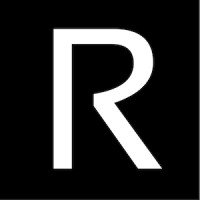Rain’s Gold Medal: Fire Containment
Our mission at Rain is to fight climate change and help firefighters save lives and protect property by developing autonomous firefighting aircraft.
Wildfires are one of the greatest contributors to global climate change, emitting 8 Billion tons of CO2 annually and contributing more than a third of the global annual burden of fine particulate pollution. Fire impacts lives, livelihoods and communities, causing widespread direct and indirect loss of life and property, evacuations and air quality issues. The rate of massive wildfire, along with drought, is only increasing — 1 in 6 Americans lives in areas with significant wildfire risk.
This month we’re deep into planning out our 2023 milestones which are focused on extinguishing early fires, just as they are detected. In spite of the atmospheric river outside our office door, our work feels urgent — we know from many conversations with fire chiefs that all this water can mean lush spring growth that provides plenty of fuel when California dries out in the summer. But before we move forward, it’s important to look back at where we’ve come from.
Christina, Katie and Mohaimenul (behind Christina) preflight the sensor package prior to flight testing. This year we’re continuing development of our Integration Kit, which adds rapid wildfire suppression intelligence to existing aircraft — fire perception, path planning, suppression strategy, and retardant targeting. This enables pre-positioning aircraft in remote regions at high risk of wildfire, where they can respond fast enough to contain nearby ignitions.
The past year was a big one for us. We moved from our Oregon outpost to the Bay Area to be more closely located to our customers, which has helped us increase our team by adding some of the most knowledgeable people in their respective fields. It’s also enabling our collaboration with the innovative fire professionals of California. Perhaps most exciting to all of us here at Rain though, we’ve grown from using a small kit helicopter for flight testing to using a 1,000 lb helicopter which we outfitted with a mission computer, infrared and visual spectrum cameras, INS, GPS and other sensors, communication links, fire perception, and the suppressant deployment equipment.
Internally we called this test ‘The Gold Medal’ because it brought together our realtime fire mapping software and novel foam suppression system and contained a real (albeit quite safely contained) fire. Being a small and agile startup has its benefits. We were able to go from project inception to first flight in 162 days, followed by over 45 days of flight testing that culminated in containing a test fire in September.
Rain’s purpose-built MK2 was designed to demonstrate that the technology required to automate firefighting aircraft exists today. It serves as a testbed for new aerial firefighting technologies, such as Rain’s proprietary realtime fire intelligence system and first-of-its-kind aerial compressed air foam system (CAFS).
During the flight tests, Rain’s onboard fire mapping system localized a point source fire to within <6 ft and the aircraft was used to suppress it, demonstrating the highly precise targeting which is only possible using technology-enabled computer vision and autopilot systems. Our Chief Engineer, Ephraim Nowak explains, “Compressed air foam systems are presently used in ground-based wildland firefighting applications, where vehicles have a limited payload.” So far, this has not been deployed on firefighting aircraft, since it requires precision targeting, something modern autopilots now enable.
These tests successfully demonstrated combining these technologies to suppress a fire, but our simulations and customer conversations have always pointed toward a larger payload (ie being able to carry more water). This, and more product flexibility to integrate our systems within existing fire fleets is our inevitable direction.
Rain’s flight team at the close of the fall test campaign. Our 2022 campaign leaves us well positioned to successfully complete upcoming pilot projects with Californian fire agencies during 2023 as part of our build-up program to provide autonomous wildfire suppression services to high-risk regions.
Every wildfire starts small. Advances in automation enable us to position rapid-response firefighting assets in high-risk regions, where it would otherwise be impossible to staff humans 24/7. The launch of our MK2 airframe is the culmination of 18 months of research and development efforts. This is a major step towards our goal of eliminating catastrophic wildfires, and we look forward to another ambitious year ahead.
About Rain Industries
Rain Industries was founded in 2019 to prevent catastrophic wildfires using a distributed network of autonomous aircraft located in high-wildfire-risk regions. By responding to ignitions within seconds, we can contain them within minutes.
If you are excited by our mission, please get in touch at info@rain.aero. Interested investors should contact invest@rain.aero, and press inquiries should be directed to press@rain.aero





